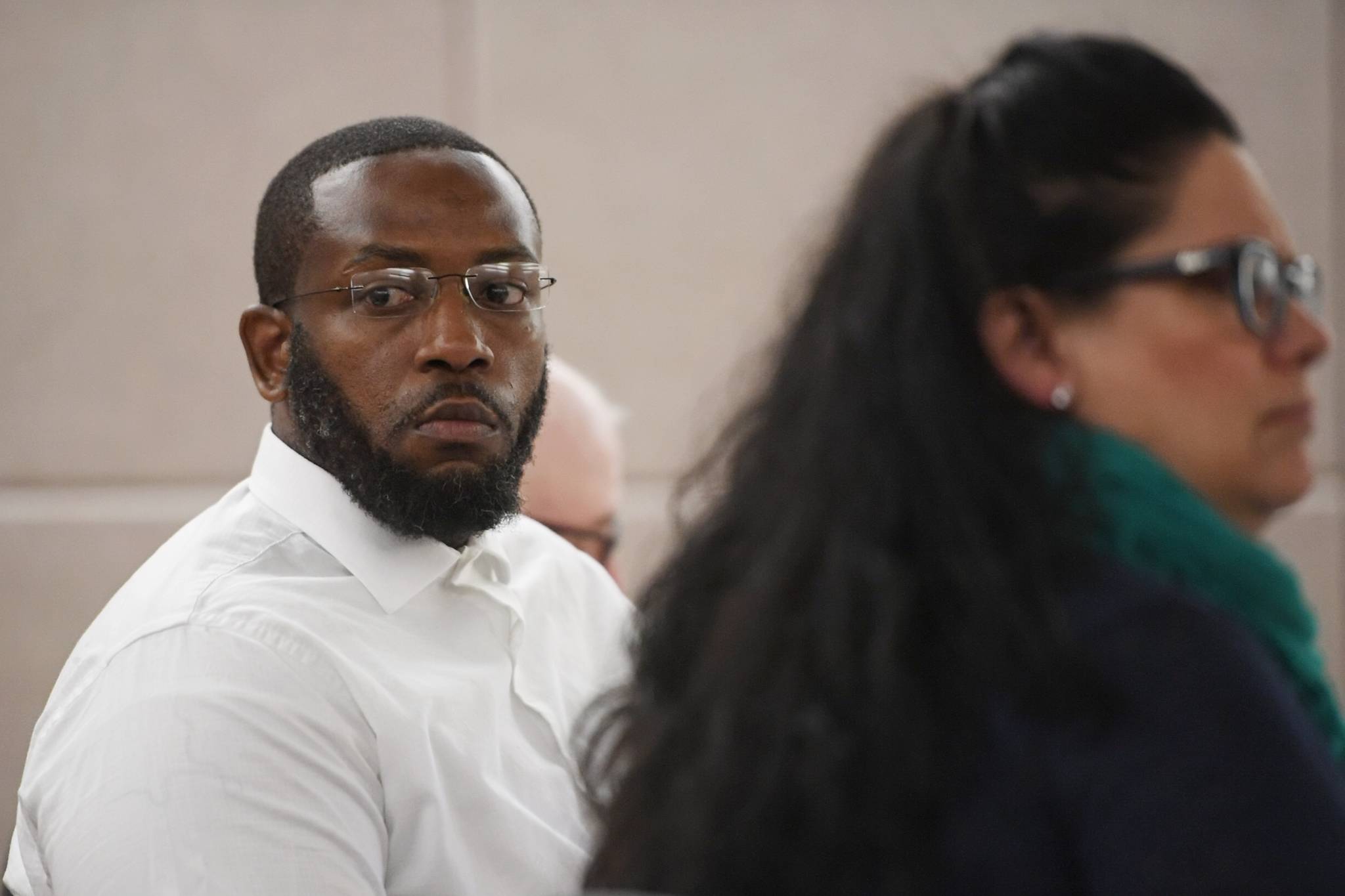Editor’s Note: This article contains the use of a racial slur and could be offensive to some readers.
A double murder trial in Juneau is shining light on Alaska’s capital city drug scene.
The trial against 42-year-old Laron Carlton Graham — who is facing two counts of first-degree murder for the shooting deaths of Robert Meireis and Elizabeth Tonsmeire — began in Juneau Superior Court this week, and has featured a colorful cast of witnesses during the first three days of testimony.
Drug dealer. Skinhead. Brusque. Violent. Quick to judge. Volatile. Braggadocious.
That’s how witnesses — former prison acquaintances, drug users who had purchased methamphetamine, and people who’d partied with him before his death — have described Meireis. Meireis and Tonsmeire were found dead in Tonsmeire’s Douglas apartment in November 2015.
“The only reason I knew (he dealt drugs) is because he was kind of braggadocious about it,” said David Williams, who knew Meireis from prison. “He wanted you know about it.”
Williams said he got lunch with Meireis the day of his death, recalling Meireis’ arrogant personality and fixation on flashing his cash and firearms.
“He had a lot of guns,” Williams said.
Prosecutors believe the murders were a result of a bad sale of drugs by Meireis to Graham, based on an alleged confession Graham made to a fellow prisoner while incarcerated.
According to prosecutor John Darnall’s opening statements, Graham went to seek recompense for a dodgy batch of heroin. Meireis — allegedly a white nationalist, a theory given credence by photos of his Nazi-themed tattoos — declined to refund Graham and called him the N-word. Graham, who is African-American, allegedly took exception to the racial slur and shot Meireis in the face, and then killed Tonsmeire to cover up the crime, Darnall’s theory goes.
The defense, meanwhile, maintains there’s no forensic evidence proving that. There’s also no witnesses to the deaths, or murder weapon, Defense Attorney Natasha Norris said in her opening statements at the start of the week.
At the time in 2015, police and investigators cast a wide net interviewing anyone who might have information that would develop the case. Sometimes, those sources came to them.
“As a group of people, they understand that kind of behavior is not OK and they come forward,” Juneau Police Department Lt. Krag Campbell told the Empire.
It’s not unusual for people involved with drug users or connected to the trade to come forward to offer information after a violent crime, Campbell said.
“If someone’s in the drug scene and commit a crime, the people who know about that are probably going to be affiliated,” he said.
Police sergeant testifies on crime scene photos, drug use in double murder trial
Fate Wilson, a witness in the case, said on the witness stand he purchased methamphetamine from Meireis hours before Meireis died. He might have been one of the last people to see Meireis alive, besides the killer.
“I was buying drugs from him,” Wilson said.
Wilson, along with others who knew Meireis, either directly or indirectly through his business selling methamphetamine, are often some of the best sources of information for the investigation, Campbell said.
“My experience in Juneau, there’s a lot of people who are involved in the drug scene, but there isn’t as much violence as a bigger city,” Campbell, who has been with JPD for 17 years, said.
Wilson was one of a number of people who dealt, directly or indirectly, with Meireis in his unsavory trade. The web of witnesses who knew of Meireis in his chosen occupation has expanded with each day of the trial.
Others from Meireis’ social circle knew him in other ways.
“I knew Meireis better than most,” said James Barrett, no stranger to controversy himself. “He was an elusive man.”
Barrett testified during the trial that he had suspicions about what Meireis did, but never confirmed them. Barrett also knew Tonsmeire, loaning her his truck, and talking and texting with her in the weeks before her murder.
The trial will continue on Tuesday.
• Contact reporter Michael S. Lockett at 523-2271 or mlockett@juneauempire.com.

